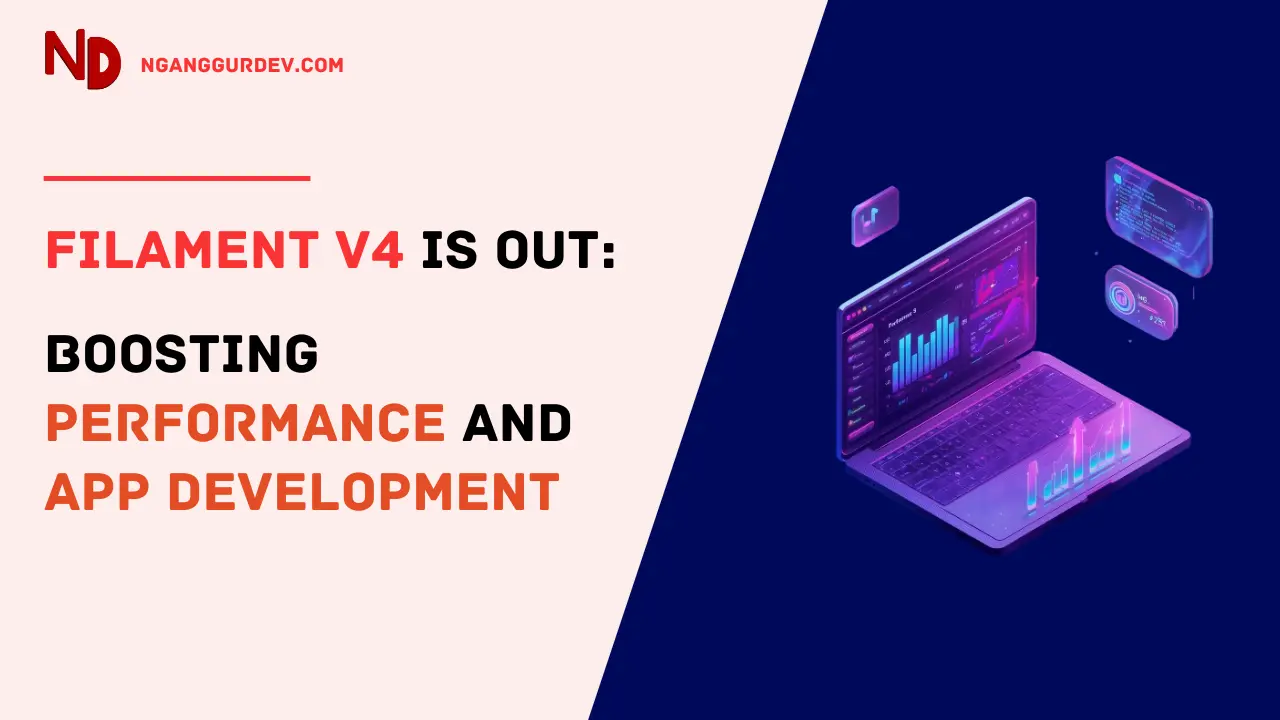Filament v4 officially launched on August 12, 2025, bringing massive performance improvements that leave its predecessor (v3) in the dust. According to official testing and documentation, Filament v4 delivers rendering speeds that are 2-3x faster, especially when dealing with tables and forms. New features like partial rendering and optimized Blade templates make your Laravel applications incredibly responsive, particularly when you're working with large datasets.
Why Performance Matters So Much in Filament v4
Filament was built to help Laravel developers create admin panels that are both efficient and practical. Previous versions, especially v3, struggled with slow rendering when dealing with tables containing large datasets. Filament v4 tackles this head-on with deep optimizations that span from server-side improvements all the way to client-side enhancements. The result? Applications that load faster, use less memory, and provide a smoother user experience overall.
Key Performance Features in Filament v4
Filament v4 focuses heavily on reducing rendering overhead and server request load. Here are the standout features with practical examples of how they work:
- Optimized Blade Templates and Table Rendering
Many Blade templates have been streamlined to reduce the number of views that need rendering. Instead of loading new files constantly, Filament v4 uses existing PHP objects to generate HTML more efficiently. Plus, Tailwind CSS group classes have been extracted into dedicated classes, which reduces HTML size and speeds up page loading. One powerful feature you'll want to try is the lazy() method for table components. Open your resource file at app/Filament/Resources/**/*.php and add the lazy() method to your table component like this:
public static function table(Table $table): Table
{
return $table
->recordTitleAttribute('name')
->columns([
TextColumn::make('name')->sortable(),
TextColumn::make('price')->money('usd'),
])
->lazy();
}
If you set up your resources with separate configurations, you'll need to open your table configuration file at app/Filament/Resources/**/Tables/*.php.
- Partial Rendering for Forms and Components
This feature lets you re-render only specific parts of a form after state updates, rather than refreshing the entire page. Methods like partiallyRenderComponentsAfterStateUpdated() or skipRenderAfterStateUpdated() help save server processing time. This makes form interactions much snappier and works perfectly for applications with dynamic fields.
TextInput::make('name')
->live()
->partiallyRenderComponentsAfterStateUpdated(['email'])
TextInput::make('email')
->label(fn (Get $get): string => filled($get('name')) ? "Email address for {$get('name')}" : 'Email address')
- JavaScript Hooks
Methods like hiddenJs(), visibleJs(), and afterStateUpdatedJs() run logic directly in the browser without needing server requests, which dramatically reduces latency.
TextInput::make('discount')
->hiddenJs('state.quantity < 10') // hide if qty < 10
->afterStateUpdatedJs('alert("Discount updated!")');
- Enhanced Bulk Actions for Large Datasets
The chunkSelectedRecords() method processes records in small batches, reducing memory usage significantly. Bulk actions no longer hydrate all models unnecessarily, and tracking deselected records optimizes "Select all" actions.
// Force Delete Action
ForceDeleteBulkAction::make()->chunkSelectedRecords(250)
// Delete Action
DeleteBulkAction::make()->chunkSelectedRecords(250)
// Restore Action
RestoreBulkAction::make()->chunkSelectedRecords(250)
- Efficient Icons with Heroicon ENUM
Filament v3 managed icons as strings, which could cause errors and slow down rendering. Filament v4 uses enums for icons instead, improving type-safety and making icon rendering much more efficient.
//Icon Navigation
protected static string|BackedEnum|null $navigationIcon = Heroicon::OutlinedStar;
// Icon Input
TextColumn::make('status')
->icon(HeroIcon::STAR);
- Improved Global Search Performance
By default, Filament's global search breaks search queries into separate words and searches each independently, allowing more flexible results. However, this approach can slow performance when handling large datasets due to increased query complexity. Filament v4 introduces a new $shouldSplitGlobalSearchTerms property that lets developers disable word splitting in global search, reducing query complexity for large datasets.
protected static ?bool $shouldSplitGlobalSearchTerms = false; //set false
- Component Caching (Production)
The php artisan filament:cache-components command creates a cache for component indexes (resources, pages, widgets), reducing auto-discovery time. This is incredibly helpful for applications with many components. Alternatively, use php artisan optimize for comprehensive optimization, including component caching.
Summary
Filament v4 is an essential upgrade for Laravel developers who want high-performance applications. With features like partial rendering, JS hooks, and optimized bulk actions, you can reduce rendering times by 2-3x while keeping your code clean and maintainable.
This isn't just an incremental update - it's a complete performance overhaul that transforms how admin panels handle large datasets and complex interactions. If you're serious about building responsive, professional admin interfaces, Filament v4 delivers the tools you need to create applications that feel lightning-fast, even under heavy loads.
Thanks for reading!


